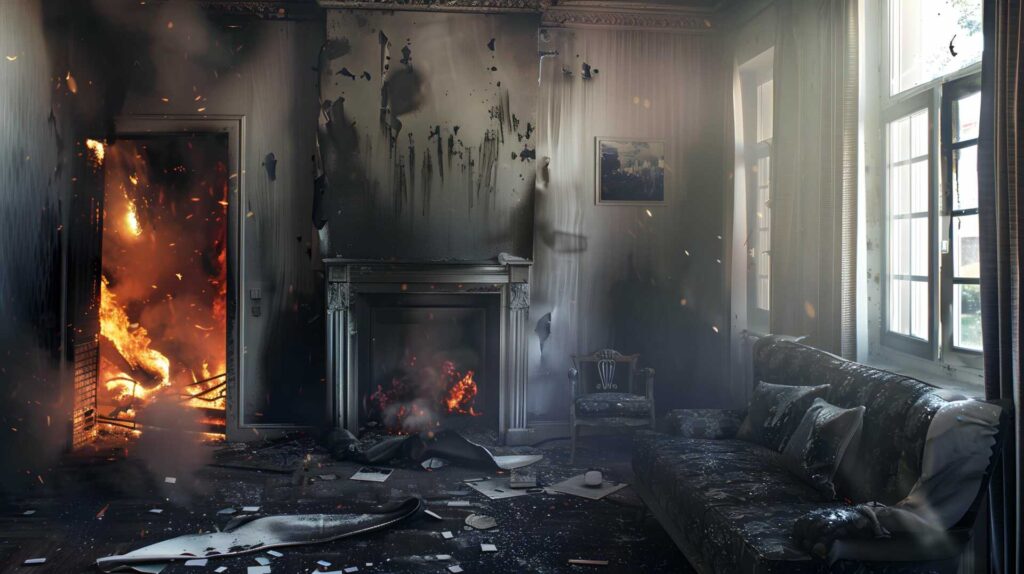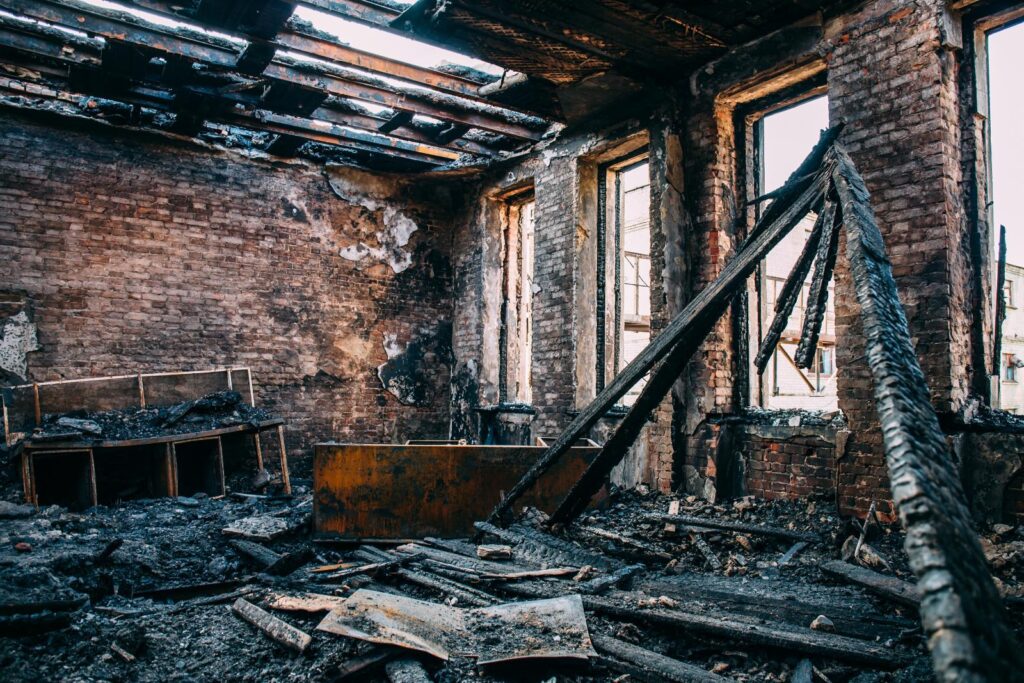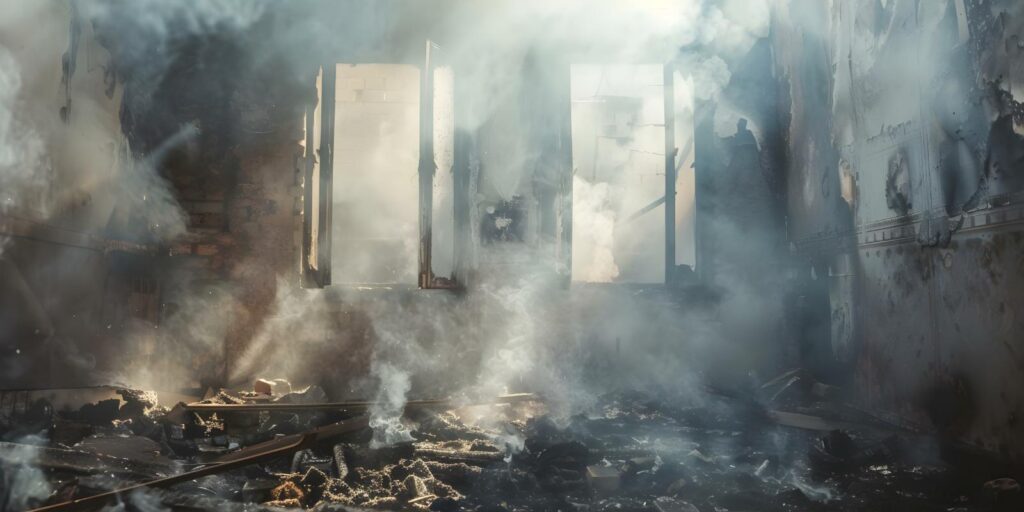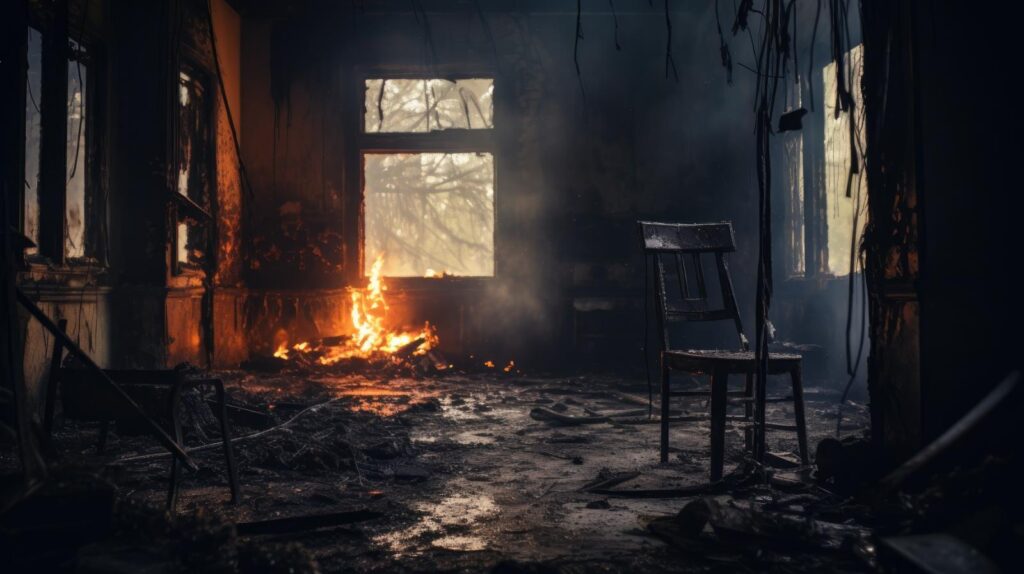
Contents
When fire strikes, it’s like a thief in the night, stealing your peace of mind and leaving chaos in its wake. You might be tempted to tackle the aftermath on your own, but using proven fire damage cleanup techniques can make all the difference. These methods streamline the restoration process and safeguard your property and health. So, what specific steps should you take to ensure a thorough recovery and avoid future headaches? Understanding the importance of these techniques could be your key to reclaiming safety and stability.
Key Takeaways
- Proven techniques minimize structural damage by quickly addressing smoke and water issues, preventing further deterioration of the property.
- Utilizing specialized equipment and methods ensures thorough removal of soot and odors, enhancing indoor air quality post-cleanup.
- Professional cleanup services expedite the recovery process, allowing homeowners to focus on rebuilding rather than navigating complex restoration tasks.
- Effective techniques mitigate health risks associated with smoke exposure and mold growth, promoting a safer environment for occupants.
- Implementing proven methods aids in accurate documentation for insurance claims, facilitating a smoother reimbursement process during recovery.
Understanding Fire Damage
When you experience a fire, understanding the damage it causes is crucial for effective cleanup and restoration. Fire can originate from various causes, including electrical failures, cooking accidents, or even natural disasters. Each type of fire leaves behind distinct damage, requiring a thorough damage assessment to determine the extent of the destruction.
Start by identifying the main areas affected—this includes structural damage, smoke residue, and water damage from firefighting efforts. Structural integrity is vital; check for warped beams, weakened walls, or compromised foundations. These issues affect safety and influence restoration efforts.
Next, assess the smoke damage. Smoke can penetrate deep into materials, leaving odors and soot that require specialized cleaning techniques.
Water damage is another significant concern. The moisture from firefighting can lead to mold growth and further deterioration if not addressed promptly. Documenting all these factors during your damage assessment is essential for insurance claims and restoration planning.
Consider enlisting professionals who specialize in fire damage cleanup. They bring expertise in identifying hidden damage and utilizing advanced techniques to restore your home or business. Their knowledge can make a significant difference in the outcome of your restoration efforts.
Importance of Quick Response
Acting swiftly after a fire is crucial for mitigating damage and ensuring a successful recovery. A rapid response can make all the difference, as every moment counts in the aftermath of such a devastating event. By taking immediate action, you protect your property and help safeguard your emotional well-being during a challenging time.
Here are some key reasons why a quick response is so important:
Minimizes Structural Damage: The longer you wait, the more your property can suffer from smoke and water damage.
Reduces Health Risks: Smoke and soot can pose serious health hazards; immediate cleanup helps eliminate these threats.
Prevents Mold Growth: Quick action can prevent mold from taking hold, which can complicate recovery efforts.
Facilitates Insurance Claims: Acting fast can provide documentation that supports your claim, easing the financial burden.
Restores Peace of Mind: Knowing you’re taking steps to address the damage can help reduce anxiety and stress.
When a fire strikes, it can feel overwhelming, but remember that your community is here to support you.
By enlisting the help of professionals who understand the importance of immediate action, you can navigate this challenging process together.
You don’t have to face the aftermath alone; a rapid response aids physical recovery and fosters a sense of belonging and resilience among those affected.
Essential Cleanup Equipment
When tackling fire damage cleanup, having the right equipment is crucial for both your safety and efficiency.
You’ll need to prioritize safety gear, such as masks and gloves, to protect yourself from harmful residues.
Alongside this, effective cleaning tools like industrial vacuums and specialized detergents will ensure thorough removal of soot and debris.
Safety Gear Necessities
Equipping yourself with the right safety gear is crucial for effective fire damage cleanup. You need to protect yourself from the hazards that come with the aftermath of a fire, which can include toxic smoke, debris, and harmful chemicals.
By prioritizing safety, you contribute to a team-oriented environment where everyone looks out for one another.
Here’s a list of essential safety gear you should consider:
Protective Clothing: Wear long-sleeved shirts and pants made from flame-resistant materials to shield your skin.
Respiratory Protection: Use N95 respirators or more advanced masks to filter out harmful particles and smoke.
Safety Goggles: Protect your eyes from dust and debris that can cause irritation or injury.
Steel-Toed Boots: Opt for sturdy footwear that can withstand heavy objects and provide ankle support.
Gloves: Use durable, cut-resistant gloves to safeguard your hands from sharp or hazardous materials.
Effective Cleaning Tools
After ensuring you’re protected with the right safety gear, it’s time to focus on the tools that will make the cleanup process effective and efficient.
First, you’ll need effective scrubbers. These come in various forms, from handheld brushes to power scrubbers, and they’re essential for removing stubborn soot and debris. Choose a scrubber that suits the surfaces you’re tackling, ensuring you’re not damaging anything in the process.
Next, don’t underestimate the power of chemical solutions. Look for specialized fire damage cleaning products that can help break down the residue left behind. Always follow the manufacturer’s instructions for safe and effective use. Combine these chemical solutions with your scrubbers for maximum impact.
Additionally, invest in high-quality vacuums equipped with HEPA filters to trap fine particles that traditional vacuums might miss. A pressure washer can also be beneficial for outdoor areas that require deep cleaning.
Lastly, keep microfiber cloths on hand for wiping down surfaces post-scrubbing. When used correctly, these tools will make your cleanup more thorough and foster a sense of accomplishment and belonging as you restore your space.
Effective Smoke Removal Techniques
To effectively remove smoke from your space, you’ll need to utilize professional equipment designed for deep cleaning.
High-powered air scrubbers and ozone generators play crucial roles in eliminating lingering odors and restoring air quality.
Additionally, advanced odor neutralization methods, such as thermal fogging, can penetrate surfaces to tackle stubborn smells at their source.
Professional Equipment Utilization
When tackling smoke removal after a fire, utilizing professional equipment can significantly enhance your cleanup efforts. By employing advanced technology and specialized tools, you improve efficiency and ensure a thorough job that minimizes long-term damage.
Here are some essential tools you’ll want to consider:
Industrial Air Scrubbers: These machines filter out smoke particles and improve indoor air quality.
High-Efficiency Particulate Air (HEPA) Vacuums: Perfect for capturing fine soot and debris that regular vacuums can miss.
Thermal Foggers: Utilize these to penetrate porous materials, effectively neutralizing smoke odors.
Dehumidifiers: Essential for removing moisture, which can exacerbate smoke damage and promote mold growth.
Ozone Generators: These can be employed in unoccupied spaces to eliminate stubborn smoke odors.
Utilizing these specialized tools allows you to tackle smoke damage methodically, ensuring a safer and cleaner environment.
Advanced Odor Neutralization Methods
Three key advanced odor neutralization methods can effectively tackle smoke odors lingering after a fire.
First, consider using ozone generators, which release ozone molecules that react with odor particles, breaking them down and neutralizing the smell. This advanced technique is particularly useful in enclosed spaces, ensuring comprehensive odor control.
Next, you might explore thermal fogging. This method involves using a specialized fogging machine to disperse a heated fog of deodorizing agents. The fog penetrates surfaces, reaching areas where smoke molecules have settled. This can be especially effective in restoring your home’s environment after a fire.
Lastly, hydroxyl generators can also be beneficial. These devices produce hydroxyl radicals that naturally eliminate odors without harmful side effects. Unlike ozone, they’re safe for occupied spaces, allowing you to reclaim your home while effectively managing odor control.
Structural Assessments and Repairs
After a fire, assessing the structural integrity of a building is crucial for ensuring safety and planning repairs.
You need a thorough evaluation to identify any potential hazards before moving forward. Understanding the extent of the damage will help you determine the best repair techniques to restore your space.
Here are five key factors to consider during your structural assessment:
Visual Inspections: Look for visible signs of damage, such as cracks or warping in walls, ceilings, and foundations.
Load-Bearing Elements: Check beams, columns, and other load-bearing structures to ensure they’re not compromised.
Materials Analysis: Assess the condition of materials like wood, steel, and concrete, as some may need replacement.
Foundation Integrity: Evaluate the foundation for any shifts or settling that could indicate serious issues.
Professional Guidance: Consider involving a structural engineer for a detailed analysis, ensuring you cover all bases.
Water Damage Considerations
Water damage can often be just as devastating as fire damage, and understanding its implications is vital for effective recovery. When you encounter water damage, identifying the water source is your first priority. Whether it’s from firefighting efforts, burst pipes, or heavy rain, knowing where the water is coming from helps you formulate a targeted response.
Next, consider the moisture impact on both your property and belongings. If not addressed promptly, water can seep into walls, flooring, and furniture, creating a breeding ground for future issues. Pay attention to the materials affected; porous surfaces like drywall and carpeting absorb moisture quickly, increasing the risk of structural damage.
As you assess the situation, remember that time is of the essence. The longer the moisture lingers, the more extensive the damage becomes. Utilize specialized equipment such as dehumidifiers and fans to expedite drying. Proper ventilation is crucial; it helps reduce humidity levels and prevents further complications.
Don’t overlook the potential for hidden damage. Water can travel along beams, behind walls, and under floors, making thorough inspections essential. Document everything for insurance purposes, as this information is invaluable during the claims process.
Working methodically through the recovery process helps restore your property and provides peace of mind. You’re not alone in this; seeking professional assistance can ensure that you tackle water damage effectively, allowing you to reclaim your space and move forward with confidence.
Mold Prevention Strategies
Preventing mold growth is crucial, especially after water damage incidents.
Mold thrives in damp environments, so moisture control should be your first line of defense. Implementing effective strategies will safeguard your home and create a healthier living space for you and your loved ones.
Here are five key tactics to consider:
Thoroughly Dry Affected Areas: Use fans and dehumidifiers to ensure all water-damaged materials dry quickly.
Inspect for Hidden Moisture: Check behind walls, under floors, and in crawl spaces to identify any hidden dampness.
Seal Leaks Promptly: Address any plumbing issues or roof leaks immediately to prevent water accumulation.
Improve Ventilation: Open windows, use exhaust fans, and keep air circulating to reduce humidity levels.
Use Mold-Resistant Products: When renovating, choose mold-resistant paints and materials to minimize future risks.
Professional Services Benefits
Engaging a professional service for fire damage cleanup offers numerous advantages that can significantly streamline the recovery process.
First and foremost, experts in this field bring specialized knowledge and experience, ensuring that every aspect of the cleanup is handled efficiently. They understand the complexities involved with fire damage and can quickly assess the extent of the destruction, allowing for a more accurate restoration timeline.
One of the most daunting tasks after a fire is dealing with insurance claims. Professionals can assist you in navigating the often-complicated claims process, helping you document the damage and providing the necessary evidence to support your claim. This invaluable support can alleviate some of the stress you might face during this challenging time, letting you focus on rebuilding rather than paperwork.
Additionally, professional cleanup services utilize advanced equipment and techniques that you mightn’t have access to. This means they can remove smoke, soot, and odors more effectively than DIY methods, ensuring your home feels like home again sooner.
They also adhere to industry standards and safety regulations, which protect your property and your health.
Long-Term Safety Measures
Implementing long-term safety measures after a fire is crucial for preventing future incidents and ensuring your home remains secure.
You’ll want to adopt a comprehensive approach that involves long-term planning and integrating safety protocols into your daily routine. Here are some effective strategies to consider:
Install smoke detectors: Regularly check and replace batteries to ensure they function correctly.
Create an emergency escape plan: Involve your family in planning so everyone knows their role during a fire.
Conduct regular fire drills: Practice your escape plan to familiarize everyone with the route and procedures.
Maintain electrical systems: Schedule periodic inspections by a qualified electrician to identify and rectify potential hazards.
Store flammable materials safely: Keep all chemicals and flammable items in designated, secure areas away from heat sources.
By focusing on these long-term safety measures, you will protect your home and foster a sense of community and support among your family and neighbors.
Sharing knowledge and resources can help everyone feel more secure and prepared.
Review
Just as a gardener tends to a scorched field, nurturing it back to life, you, too, can revitalize your home after fire damage. By using proven cleanup techniques, you’re not just restoring walls and floors; you’re cultivating safety, health, and peace of mind. Each step you take in this meticulous process helps prevent future perils, allowing your sanctuary to flourish once more. Embrace these methods, and watch your once-charred haven bloom anew, resilient and stronger than before.



